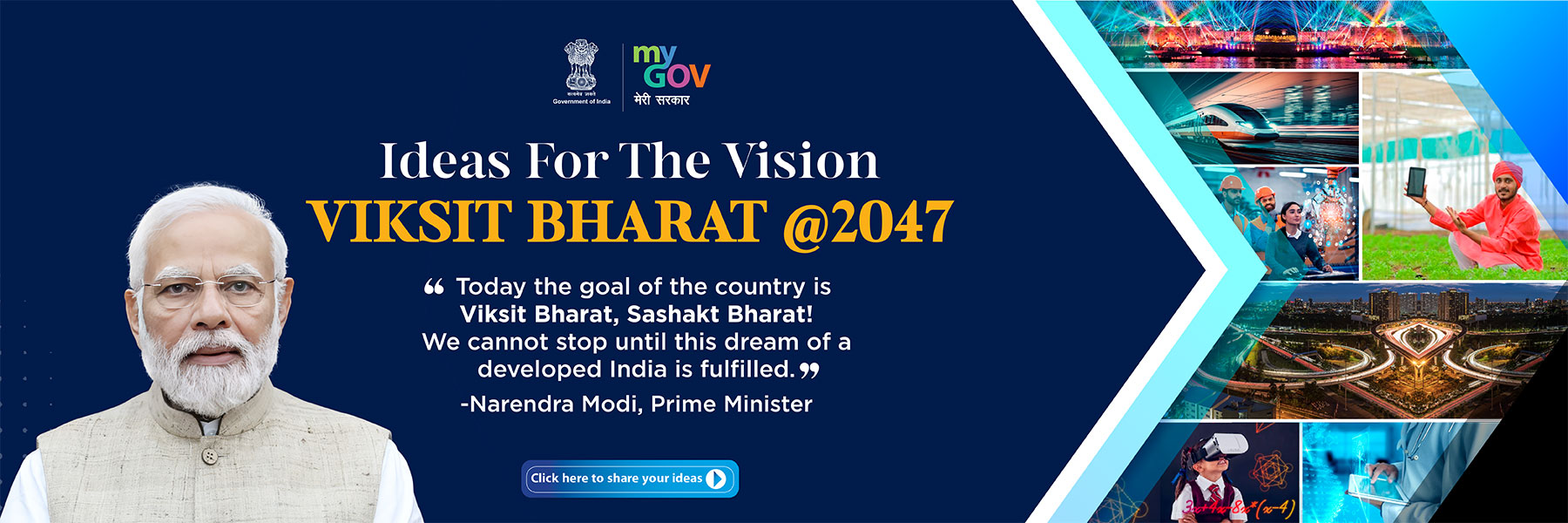The slogan “Viksit Bharat by 2047”, an optimistic vision, is often repeatedly invoked by Modi and other BJP leaders. But, what is the reality? Is it possible when view in the past 75 years of the independent India story from all angles?
Of course, “to dream a new dream or build castles in the air” is undeniably good. One may not achieve the desired goal but at least it determines the means and ways ahead to follow. Let me single out Victor Hugo’s reflection: “If you don’t build castles in the air you won’t build anything on the ground.”
Political rivals may criticize “Vikshit Bharat” as a fantasy, dream, desire, or idle fancy that is a virtual impossibility. But critics must suggest alternative end objectives, if any, for the nation to traverse and achieve in short-, mid-and long-term contexts. Merely criticizing for the sake of criticism to incite civil unrest or to score brownie political points serves no purpose.
Most importantly, peace that includes internal political stability and sanity is imperative if India is to progress on a GDP growth rate of 7% for the next two decades to achieve comprehensive national power.
There are many views of experts highlighting India’s progress by the 2030s and 2050s including IMF Exec. Director Krishnamurthy V Subramanian- $55 trillion economy by 2047 with 8% growth; IMF Policy First Deputy MD, Gita Gopinath – 3rd largest economy by 2027 based on 7% growth; D. K. Srivastava, India Chief Policy Advisor: India to reach US$5, 10, 20 and 30 trillion by FY27, FY34, FY43 and FY48, respectively; HDFC Bank Chairman Atanu Chakraborty – USD 30-trillion economy by 2050; Adani Group- $25-$30 trillion economy by 2050; and others.
Taking the average sum of experts’ opinions, India may reach US $30-50 trillion, thereby emerging as an upper-middle income economy based on a GDP growth rate of between 6% to 8% thereby rapidly catching up with the US and Chinese economies. Based on the size of GDP in purchasing power parity (PPP) terms by the late 2040s, OECD’s baseline projections project India may overtake the US to become the second largest economy.
In hindsight, there are many variables that govern the final outcomes of dreams or visions. Fundamentals like geography (area and climate), characteristics of demographics, national spirit, social unity, political order, internal and external threats, leadership capability, technology, and economic power basically govern final outcomes.

Ipso facto, political stability is most critical to achieving “Viksit Bharat 2047”, which appears a remote prospect considering the vicious confrontational politics in the name of democracy on grand display. Achieving national unity is quite challenging due to the nature and character of a diverse and pluralist society. Also, the national spirit to surmount challenges remains poor.
Next, India’s geography and demographics are critical to analyse. India covers 32, 87,263 sq. km. As per World O meters of 10 August 2024, the population of India was 1,452,350,750 based on elaboration of the latest United Nations data. By extrapolation based on past trends (1,210,854,977 in 2011 to 1,452,350,750 in 2024, that is, an increase of over 242,000,000 in 13 years), the population is bound to cross 1,700,000,000 by 2047 that is after 21 years even when taking into consideration decreasing total fertility rate (TFR) from 2.122 in 2024 (replacement level being 2.1).
Ironic but true that with 2.4% of the total land area of the World, India is supporting 18% of the World’s population. As per World Bank data, the per capita of arable land availability has been decreasing over time due to population of growth since 1951 to include: 0.89 hectares per person in 1951; 0.27 hectares per person in 2011; 0.10973 hectares per person in 2021; and projected to be 0.08 hectares per person in 2035. By extrapolation, per capita arable land availability may become 0.07 hectares per person by 2060.
From Stone Age to Space Age represents the character of demographics. Commonly highlighted is that great Indian society is multi-ethnic, multi-racial, and multi-communal. Furthermore, the quality of human resources still remains low to exploit technology-age developments due to lack of quality education and development of appropriate and advanced technology skills in all fields including agriculture.
Yet another significant issue concerns the availability and access to raw material resources, particularly strategic materials like “Rare Earth” and nuclear raw minerals. Rapid over-exploitation of raw materials like coal and iron ore is also real.
When viewed from the prospects of GDP (Normal) in US$ at an average 7% growth rate per annum, the Indian economy may be estimated to include: US$.7.66 trillion by 2030; US$15.2 trillion in by 2040; and U$.24.7 trillion by 2047.If so, with a projected population of 170 crores by 2047, the per capita income may still remain insignificant compared to developed nations.
Viewed in the likelihood of an average 5% inflation rate increasing at least 100 percent, the value of One lakh $ after 25 years will be only $29,000.00. If so, the value of $20000.00 per capita income will be only around $.7000.00. If so, India with $7000.00 per capita income will be around 95 ranks only (Marginal increase from 135 today).
Finally, the most critical issue that needs to be addressed is simple. Can a nation with a GDP per capita income of around US$10,000 per annum claim to be a developed nation–Viksit Bharat by 2047? Surely, experts must critically analyse all likely factors in political, social, economic and technology sectors and present various scenarios of India’s “Developed Nation Status” by 2047. No useful purpose will be served by invoking bombastic slogans as dreams or visions. The most significant strategic factor that governs outcomes is “demographic transitions – population explosion, illegal and legal migrations, and identity crises”. Hardly there are attempts to exercise strict control to maintain strategic equivalence as it prevails now.






